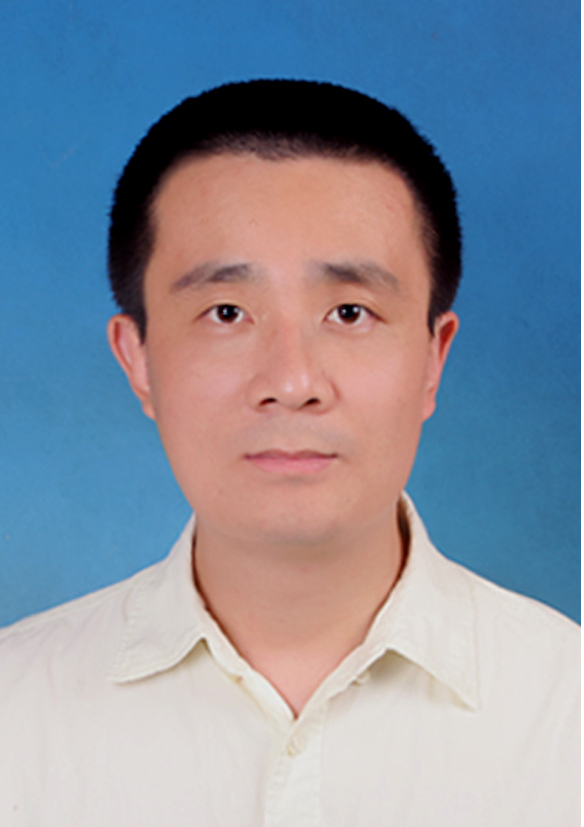1. Educational Experience
2008-2011 College of Chemistry, Nankai University. Ph.D.
2006-2008 College of Pharmaceutical Science and Technology, Tianjin University. M.S.
2001-2005 College of Pharmacy, Shandong University of Traditional Chinese Medicine. B.S
2. Working Experience
2014-present School of Pharmacy, China Pharmaceutical University. Associate Professor
2022-2023 Department of Chemistry, University of Tokyo, Visiting Scholar
2012-2014 School of Chemistry and Chemical Engineering, Nanjing University. Postdoctor
Biosensing and bioimaging
Luminescent materials
Metal-organic frameworks (MOFs)
The research is mainly focus on the development of functional materials or devices for biomarker sensing, pharmaceutical analysis or optical imaging.
1. Research Projects
(1) National Natural Science Foundation of China (21705165)
(2) Jiangsu Provincial Natural Science Foundation (No. BK20150689)
2. Representative Research Achievements
(1) Development and application of diagnostic techniques for nucleic acid molecules (miRNA, mRNA, ctDNA, etc.). (Biosensors and Bioelectronics 2021, 176, 112896; Analytical Chemistry 2020, 92, 12670-12677)
(2) Designing functional materials for disease marker sensing, single cell imaging, and tumor liquid biopsy. (ACS Nano 2022, 16, 14827-14837; Nano Letters 2022, 22, 8688-8694)
(3) Pharmaceutical analysis and chromatographic analysis. (Trac-Trends in Analytical Chemistry 2012, 31, 96-108; Anal. Chem. 2014, 86, 3013-3019)
1.H.-S. Wang*#, X.-Y. Wang#, H.-T. Ding#, X.-Y. Hu, J. Li, C. Cheng and F. Zheng*, Nano Letters, 2022, 22, 8688-8694. (IF = 12.2)
2.J.-L. Wang#, X.-Y. Hu#, C.-G. Han, S.-Y. Hou, H.-S. Wang* and F. Zheng*, ACS Nano, 2022, 16, 14827-14837. (IF = 18.0)
3.X.-Y. Hu, J.-J. Li, Z.-W. Yang, J. Zhang* and H.-S. Wang*, Journal of Pharmaceutical Analysis, 2022, 12, 801-807. (IF = 14.0)
4.X. Xie#, R. Ke#, C. Cheng, Y.-H. Wang, Z. Song, C.-D. Zhang and H.-S. Wang*, Biosensors and Bioelectronics, 2021, 176, 112896. (IF = 12.5)
5.J.-L. Wang#, X.-Y. Wang#, Y.-H. Wang#, X.-Y. Hu, J.-R. Lian, Y.-L. Guan, H.-Y. Chen, Y.-J. He and H.-S. Wang*, Coordination Chemistry Reviews, 2020, 411, 213256. (IF = 22.3)
6.J. Zhang, X.-Y. Wang, Y.-H. Wang, D.-D. Wang, Z. Song, C.-D. Zhang and H.-S. Wang*, Analytical Chemistry, 2020, 92, 12670-12677. (IF = 6.9)
7.H.-S. Wang*, Coordination Chemistry Reviews, 2017, 349, 139-155. (IF = 14.5)
8.H.-S. Wang, J. Li, J.-Y. Li, K. Wang, Y. Ding and X.-H. Xia*, NPG Asia Materials, 2017, 9, e354. (IF = 7.2)
9.H.-S. Wang, H.-L. Liu, K. Wang, Y. Ding*, J.-J. Xu, X.-H. Xia* and H.-Y. Chen, Analytical Chemistry, 2017, 89, 11366-11371. (IF = 6.0)
10.H.-S. Wang, W.-J. Bao, S.-B. Ren, M. Chen, K. Wang and X.-H. Xia*, Analytical Chemistry, 2015, 87, 6828-6833. (IF = 5.8)



